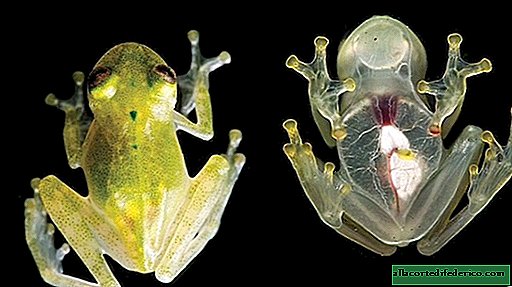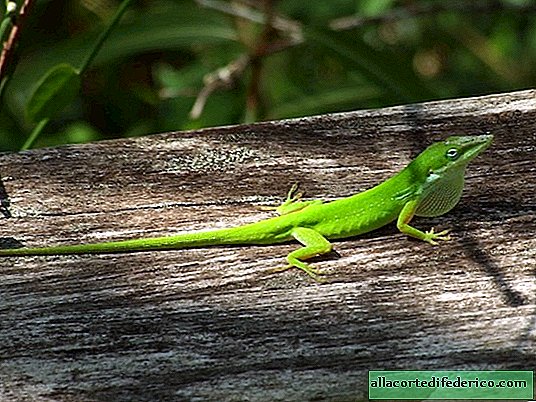In Ecuador, a new kind of glass frog was discovered, in which the heart is fully visible
A new species of tree frogs was discovered in Ecuador. They belong to the genus of the so-called glass frogs, which live in Central and South America and are distinguished by transparent skin on the abdomen. But in the new species, which was called Hyalinobatrachium yaku, even a dark red beating heart is visible through the skin!
Glass heart

Pictured: adult male Hyalinobatrachium yaku / Source: J.M. Guayasamin et al
A new species of glass frogs reaches about 2 cm in length, more than a third of which is occupied by the head. It was discovered immediately in three places: in the Amazon lowland of Ecuador, in the north-eastern part of the country and at an altitude of 300 to 350 meters. Moreover, the two individuals found were located at a considerable distance of about 110 km from each other. This suggests that Hyalinobatrachium yaku can live far beyond these places. In addition, tree frogs, in principle, are difficult to find.
According to scientists, it is also quite difficult to distinguish one species of glass frogs from another: they are similar to each other and all have completely transparent skin on their stomach and chest. However, a completely visible heart is a very unusual sign. Only two more species of glass frogs from more than 150 open have the same external features. The "beginner" also has dark green spots on his head, distinguishing him from others. And DNA analysis in general showed that those two were not close relatives to him.
Careful, fragile!
Glass frogs were discovered back in 1872 in Ecuador. But scientists quickly found out that they can be found not only in different areas of South America, but also in Central America, right up to Mexico itself. Glass frogs are very small: from 3 to 7.5 cm. They live on trees in mountain forests, but breed near water. When the tadpoles hatch from the eggs left by their parents on the leaves of trees and shrubs directly above the ponds, they immediately dive into the water and grow there.

Pictured: Lynch's glass frog / Source: Ingo Arndt
Recent findings suggest that there are still many species of glass frogs to be discovered in the region. But this can be prevented by the person himself, or rather, his activities. Ecuador’s plans to expand oil production projects could pollute local water bodies and degrade the frog’s habitat. And the construction of new roads threatens the separation and isolation of populations, which increases the risk of their extinction, scientists warn.

















